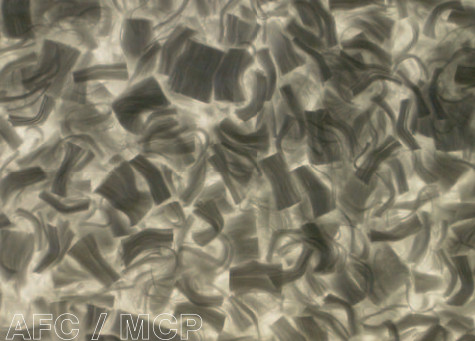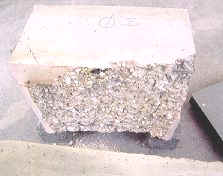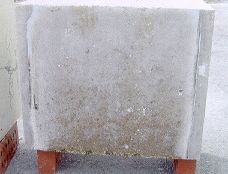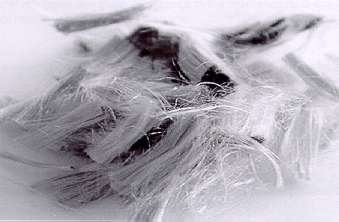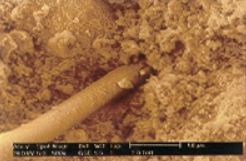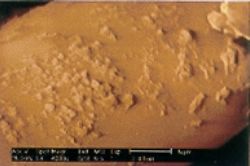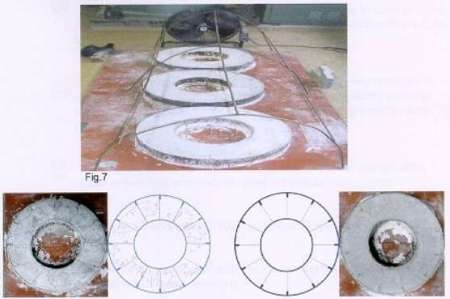
| |||||||||||||||||||||||||||||||||||||||||||||||||||||||||||
 |
The latest Generation of Fibers for Fibre Concrete
Anti Fire Crack Reduction of fire damage in concrete General: asotaŽ AFC has been developed for adding to concrete. This new fibre generation is manufactured from polyolefin polymer.
As concrete aggregates asotaŽ AFC, as well as asotaŽ MCP lead to the minimization of shrinkage cracks during the hardening phase by means of an optimized hardening process. Clear improvements such as for example ductility and durability after 30 days can be achieved. Advantage: The special Plus of asotaŽ AFC shows itself in the case of fire: The residual humidity in concrete is the cause of explosion type flaking on the surface, triggered by the vapor pressure that builds up. asotaŽ AFC fibers promote the pressure compensation in hot concrete (up to 200 degree C). asotaŽ AFC liquefies at approx. 170 degr. C. However before that asotaŽ AFC offers sufficient clearance and vapor permeability for pressure compensation. This is achieved in particular by the cavities that are spun in lengthwise.
The polymers used begin to decompose from approx. 250 degr. C. This completely frees channels and promotes the pressure balance with deep concrete layers. This reduces explosion type flaking to a minimum.
Fig.3 shows significant better test performance
Micro Crack Preventer A clear improvement of the concrete quality asotaŽ MCP (Fig. 4) has also been developed for adding to concrete. It improves all major properties of concrete.
One major advantage is the reduction of cracks due to shrinkage by up to 99,5% with asotaŽ MCP compared to standard concrete. asotaŽ MCP is a PP fibre with a round cross section and a standard staple length of 6 and 12 mm. Applications:
Impact strength, ductility: asotaŽ AFC / MCP gives the composite a certain ductility. The three-dimensional embedded elastic material minimizes the susceptibility to brittle fracture without bringing any disadvantage in relation to the strength of the concrete. For this reason alone fibres are given preference in the manufacture of pre-fabricated parts. to prevent handling and transport damage.
The illustrations (Fig. 5 and 6) show an expert opinion carried out using an electron microscope on the surfaces of fracture of a piece of concrete using asotaŽ AFC / MCP. The homogenous distribution of the asotaŽ AFC / MCP - fibres clearly showed the fibres all projected from the hardened cement paste matrix individually. No cluster formation was recognizable. When assessing the fibre surface using 4000 x magnification (right hand) illustration it could be seen that close particles of hardened cement paste point to a good bond between the hardened cement paste matrix and asotaŽ AFC / MCP - this is achieved using a special finish from asotaŽ AFC / MCP.
Effect in green concrete, in the young concrete: One problem in concrete components is the formation of micro cracks during the hardening or curing time that subsequently widen out to cracks due to shrinkage. Without the addition of asotaŽ AFC / MCP the relevant after treatment only provides a partial counteraction. asotaŽ AFC / MCP takes up the stresses occurring during the hardening process and provides for a balanced level of humidity in the matrix due to the greater retention ability. Less water thus collects on the surface (anti-bleeding) and one can speak of an "internal after treatment" of the concrete here. Many tests have confirmed the increased early strength that can be made use of above all due to reduced casing periods and faster slip-form construction.
Reduction cracks due to shrinkage by up to 99.5% Tests to represent the crack formation were carried out with and without asotaŽ AFC / MCP. The Test Set-up (Fig.7):
Fig. 8 Cracking - without asotaŽ AFC Fig. 9 Cracking - with asotaŽ AFC
Key properties
Technical Data:
*… further cut lengths on request
Recommended quantities to use: 2 kg asotaŽ AFC per 1 m3 concrete
Tests: The tests were carried out by the TU Vienna, Institute for the Study of Construction Materials, Building Physics and Fire Protection and FTI Faserbetontechnik GmbH.
Technical Data:
*… further cut lengths on request
Recommended quantities to use: 0.9 kg asotaŽ MCP per 1 m3 concrete
Tests: The tests were carried out by the TU Vienna, Institute for the Study of Construction Materials, Building Physics and Fire Protection and FTI Faserbetontechnik GmbH.
For more information please visit also this page and see the presentation in this link | ||||||||||||||||||||||||||||||||||||||||||||||||||||||||||
|
ADVANTAGES of AFC and MCP Fibers
Cement, aggregate, and sand tend to settle to the bottom of the concrete. AFC and MCP fibers hold these heavier materials in place for more uniform density. Bleed water is held in the concrete longer for more effective cement hydration. AFC and MCP fibers stop most of the cracks created by plastic shrinkage. AFC and MCP fibers act at tiny springs which absorb the sudden shock of impact. This elasticity of fiber firmly anchored in the concrete results in the large increase in resistance to impact and abrasion. AFC and MCP fibers reduce the permeability, slow the migration to primary steel of corrosive elements such as chloride ions. The Toughness Index, the ability to sustain a load after first crack, is maximized by using strong fibers which do not pull out under load. Three dimensional secondary reinforcement replaces wire mesh for a better concrete at a lower cost. AFC and MCP fibers are easy to use. Any concrete admixture may be added to the concrete without any change due to the presence of the fibers. Polypropylene fibers are highly resistant to both acid and alkaline environments. Pumping of the concrete remains the same, and fibers could reduce the amount of pump pressure. AFC and MCP fibers are safe to use, non-toxic, non-irritant. AFC and MCP fibers-polypropylene fibers are extruded only from virgin polypropylene resin under extreme quality control standards. They are always identical size, shape, strength, and performance.
Tunnel Shells and Fire Protection - Tests and Analysis Fires occurring in traffic tunnels have to be expected to give rise to maximum temperatures in the order of approx. 1200°C within 5 minutes. Depending on such factors as fire load, ventilation conditions, commencement of firefighting measures and specific local conditions, the temperatures remain at this level for about 30 to 120 minutes before the decaying phase sets in. Reinforced concrete inner shells used in traffic tunnels generally are 0.30 to 0.50 m thick. With such thicknesses, spalling concrete, a phenomenon observed during the first 30 minutes of the fully developed fire at the fire-exposed shell surface, can have devastating effects. To prevent the concrete from spalling and the shell surfaces from heating too rapidly, the shell surface has to be provided with a plaster or similar means of protection. Another measure designed to prevent spalling is an admixture of polypropylene fibres in the concrete, which in the event of a fire help relieve the steam pressure in the near-surface concrete layers.
| |||||||||||||||||||||||||||||||||||||||||||||||||||||||||||
![]()
| Be notified of page updates |
wwwswicofilcom2015


